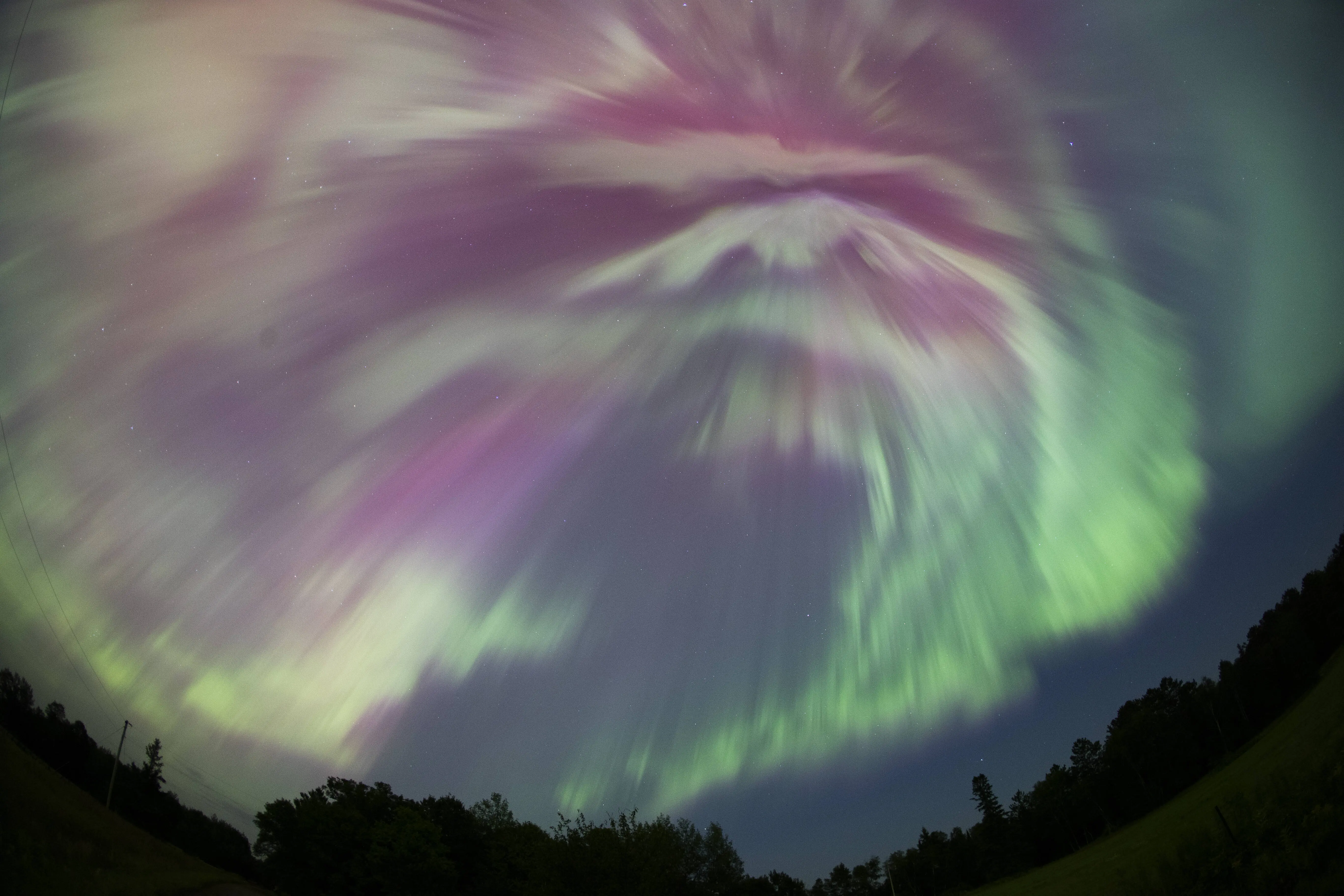What is a severe geomagnetic storm? Everything to know as the NOAA issues G4 alert on its 5 intensity scale
-
 MINNESOTA, UNITED STATES - AUGUST 12: (EDITORS NOTE: This image was shot with a fisheye lens.) The northern lights (Aurora Borealis) illuminates the sky as a geomagnetic storm is bringing vibrant green and pink colors, during the peak of the Perseid meteor shower in Aitkin, Minnesota, United States on August 12, 2024. (Photo by Christopher Mark Juhn/Anadolu via Getty Images)
MINNESOTA, UNITED STATES - AUGUST 12: (EDITORS NOTE: This image was shot with a fisheye lens.) The northern lights (Aurora Borealis) illuminates the sky as a geomagnetic storm is bringing vibrant green and pink colors, during the peak of the Perseid meteor shower in Aitkin, Minnesota, United States on August 12, 2024. (Photo by Christopher Mark Juhn/Anadolu via Getty Images)A unique aurora event is expected to be seen across the US skies on Wednesday, as announcements of a severe geomagnetic storm were made by the National Oceanic and Atmospheric Administration (NOAA).
The department issued a forecast of the storm on Tuesday, believing it would reach a severe (G4) level on Wednesday afternoon.
For the unversed, a severe geomagnetic storm occurs when the Earth's magnetic field is disturbed by magnetic field or plasma structures, such as corotating interaction regions (CIRs) and coronal mass ejections (CMEs). These materials are occasionally ejected by the sun and appear to have a somewhat bubble-like structure.
NOAA notes that the latest CME to enter our planet's magnetic field in the past few days is the "most energetic and fastest of the CMEs," and is associated with the strongest flares of the current solar cycle.
BREAKING: A Massive Geomagnetic Storm Is Lighting Up Skies Across The United States Tonight, With The Noaa Issuing A Rare G4 Alert On Its 5 Intensity Scale. Stunning Reu, Green, And Purple Auroras Are Being Spotted Nationwide. The Northern Lights, Normally Seen Only Near The… pic.twitter.com/FGbc8Lc9Um
— Raphousetv (RHTV) (@raphousetv2) November 12, 2025The geomagnetic storms began in the US on Tuesday night and are expected to last until around 1 PM on Wednesday. This is also the time when people can spot northern lights or highly active auroral displays in the skies, visible as far south as Portland, Cheyenne and NYC, the University of Alaska reports.
Australia is lit up with southern lights amid the severe geomagnetic storms
The US isn't alone in seeing the impact of the current geomagnetic storm. Skywatchers in Australia are also delighted to witness the Southern Lights across their country, as The Guardian reports. Astronomer Dr. Laura Driessen from the Sydney Institute for Astronomy said about aurora australis:
"Given the strength of this storm, there’s a chance people farther north than typically expected in the southern hemisphere might be able to see it... Tasmania and New Zealand should get a decent view."
Meanwhile, Swinburne University's astrophysicist, Dr. Sara Webb, claims people from parts of Victoria and New South Wales might also see it, adding:
"You might just see a hint of it with your naked eye, you might see something a little bit fuzzy, maybe a little bit red. That’s when it’s time to take out your camera and take a long exposure – you can do this on your mobile phone."
Here are her instructions on capturing the aurora australis on your smartphone.
"Set your camera to take, say, a 10-second photo... you’ll often find that when you look back at the photo over those 10 seconds, your phone has collected more light than your eyes can process."
This isn't the first strong geomagnetic storm to hit Earth in recent years. Last year, two such storms occurred in the planet's magnetic field.
The first one took place in May 2024, and was later recognized as the strongest one Earth had witnessed in the last 20 years. NOAA recorded multiple X-class solar flares during the storm, which also resulted in multiple radio blackouts.
Later in 2024, another storm occurred in October, during which the northern lights were visible in even southern states, such as Florida.
TOPICS: NOAA, Geomagnetic storms November 2025